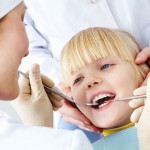
Dental anxiety is still a relatively common problem. It usually develops in childhood an early adolescence. The aim of this review was to identify and evaluate self-report measures of dental anxiety that have been used to assess children’s dental anxiety since the 1998 review by Newton and Buck.
The authors were planning to
Provide:-
- a descriptive account of each measure (e.g. number of items, scoring);
- information on the validity and reliability of each measure;
- information about the way in which these measures had been developed
Evaluate which aspects of dental anxiety they assess; and
Describe the study populations in which the different measures have been used.
The Medline and Social Science Citation Index databases were searched for dental anxiety measures completed by children themselves (≤16 years), that had been published in English and reported primary data. Non-validated measures, those using proxy measures and non-dentally specific measures were excluded. Validity of a questionnaire was typically assessed by examining how well the measures correlated with a previously validated measure that assessed the same construct (concurrent validity). The properties of each measure (reliability and validity) were assessed, and measures were evaluated against a theoretical framework of dental anxiety.
- 60 Studies met the inclusion criteria covering seven ‘trait’ and two ‘state’ measures of dental anxiety had been employed to assess children’s dental anxiety over the past decade.
- Reliability and validity estimates for the most widely used measures were good; however, many questionnaires had a limited focus in the aspects of anxiety they assessed.
- A summary of the key points for each of the measures is presented.
[table id=34 /]
The authors concluded
…the findings from this systematic review can be used to help guide dental academics, clinicians, psychologists and epidemiologists to choose the most appropriate measure of dental anxiety for their intended use. Future work should involve evaluating the content and developmental validity of existing measures with further consideration given to the use of theoretical frameworks to develop this field.
Links
Porritt J, Buchanan H, Hall M, Gilchrist F, Marshman Z. Assessing children’s dental anxiety: a systematic review of current measures. Community Dent Oral Epidemiol. 2012 Sep 12. doi: 10.1111/j.1600-0528.2012.00740.x. [Epub ahead of print] PubMed PMID: 22970833
Newton JT, Buck DJ. Anxiety and pain measures in dentistry: a guide to their quality and application. J Am Dent Assoc. 2000 Oct;131(10):1449-57. PubMed PMID: 11042984.
Schuurs AH, Hoogstraten J. Appraisal of dental anxiety and fear questionnaires: a review. Community Dent Oral Epidemiol. 1993 Dec;21(6):329-39. Review. PubMed PMID: 8306609.
